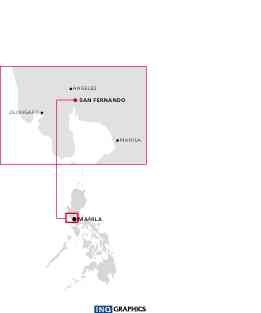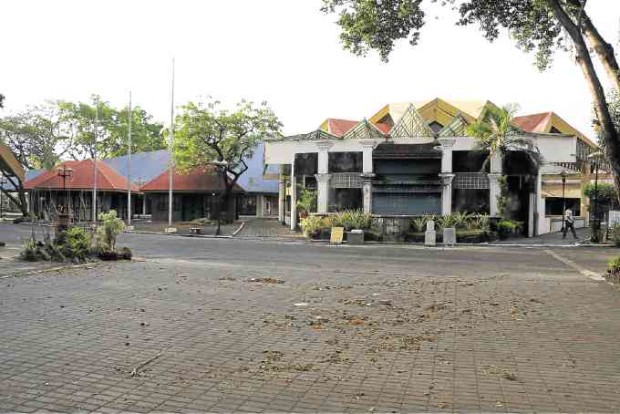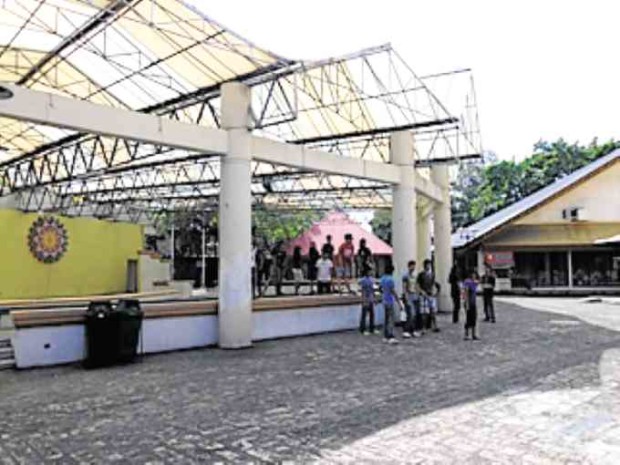San Fernando still PH Christmas capital
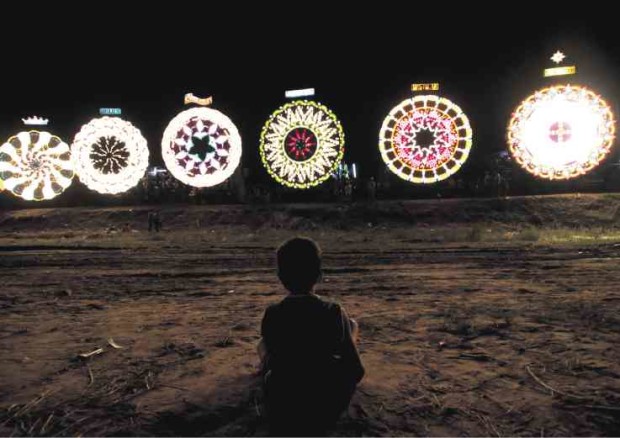
A boy sits mesmerized watching the 6-meter (20-ft) lanterns at the Giant Lantern Festival in
San Fernando City, Pampanga province. —RICHARD A. REYES
CITY OF SAN FERNANDO— “Christmas Capital of the Philippines” and “Home of the Giant Lanterns” are titles claimed by this Pampanga capital since the 1990s, and the city has stuck to that stature with community pride.
But in losing the Paskuhan Village, which was sold in December 2014 by the Tourism Infrastructure and Enterprise Zone Authority (Tieza), could San Fernando still make that same boast?
Vice Mayor Jaime Lazatin, city tourism officer Ching Pangilinan and several craftsmen still believe the titles are untarnished and unrivaled—even without the Paskuhan. The strongest proof was that the “Ligligan Parul” (Giant Lantern Festival), which was first started 108 years ago, proceeded on Dec. 17. (Only martial law interrupted the festival from 1972 to 1975.)
“San Fernando is the only place in the country that makes such big lanterns. We also have a homegrown industry [for household lanterns] and our lantern makers who live and do business in various parts of the country have influenced the design and makeup of these Christmas ornaments,” Lazatin said.
His father, Jesus, originally owned the 9.3-hectare land where Paskuhan Village was built. Opened by then President Corazon Aquino on Dec. 11, 1990, it became the venue of the Ligligan Parul.
By 2001, the venue shifted to SM City Pampanga and in the last 12 years to Robinsons Starmills.
Before the 2014 sale, the Department of Tourism failed to put new life into the Paskuhan even after it was repackaged as a flower park, a showcase of culture in central and northern Luzon, a venue for musical concerts or a conference destination.
Pangilinan defended the title, saying, “The moniker Christmas Capital of the Philippines is rooted in our intangible heritage, manifested by the Giant Lantern Festival, even before Paskuhan was established and became part of our built heritage.”
Preserving Tradition
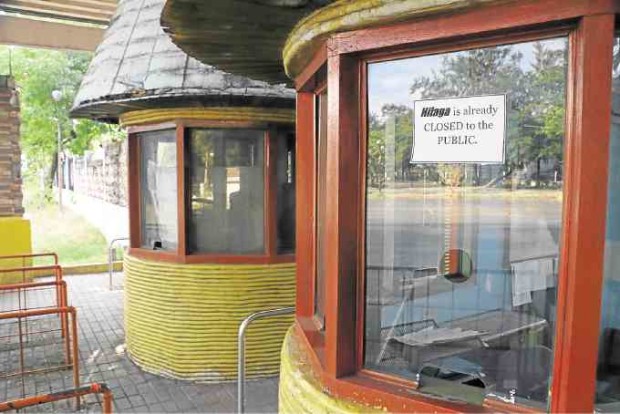
Paskuhan, renamed Hilaga after its sale to a private firm, looks empty and abandoned. —PHOTOS BY E. I. REYMOND T. OREJAS
The strength of San Fernando is “in preserving the giant lantern tradition through public and private partnerships,” she said.
“As long as the giant lanterns are there and as long as the community works together, we will still be a Christmas capital,” Pangilinan said, adding that these two elements are present and strong to date.
Roland Quiambao, 61, one of the leading lantern craftsmen, said San Fernando was “well-deserving” of the titles because these originated from traditions.
Oral accounts by old folks showed that small lanterns accompanied the “lubenas” (a corruption of novenas), a procession of the images of patron saints during the nine days of Christmas dawn masses in villages in Bacolor from which San Fernando was carved.
In 1908, salt vendor Francisco Estanislao produced a lantern that was 3.6 meters (12 feet) in diameter in honor of St. Lucy, the patroness of Barangay Sta. Lucia.
Ordinary men—mostly unschooled—kept improving on the sizes, designs and technologies of lanterns as large versions of the Star of Bethlehem that, according to the Bible, shone bright on the birth of Jesus Christ over 2,000 years ago.
To date, the lanterns measure 6 meters (20 feet), are lit with 4,000 to 12,000 light bulbs and rely on improvised equipment called rotors that produce dozens of light patterns synced with any music.
Pangilinan said the local government was not privy to the sale of the Paskuhan Village. The Tieza board in 2011 turned down the proposal of former San Fernando Mayor Oscar Rodriguez to operate the Paskuhan for local enterprises. Gov. Lilia Pineda made a similar proposal but got no response.
In a Feb. 20, 2015 letter, the board of trustees of the Giant Lantern Festival Foundation Inc. asked then Tourism Secretary Ramon Jimenez to review the sale of Paskuhan.
Incredulous
“We find it incredulous for Tieza to sell the Paskuhan Village considering that Tieza’s mandate does not include the sale of heritage places such as the Paskuhan Village. While we are aware of the order for asset privatization issued by the Governance Commission for Government-Owned or Controlled Corporations, we still feel the need [to look into] this purported sale because [it] … marks the end of an era,” the board said.
“We find it incredulous as well why this sale could transpire when the land could have most likely been donated to the government exclusively for the purpose of showcasing the rich Kapampangan Christmas traditions, most especially the Giant Lantern,” it added.
Mark Lapid, who headed Tieza when it sold the Paskuhan Village, said its privatization was “aboveboard.”
SM Development Corp. is believed to be the winning bidder, paying Tieza P939 million. It has neither confirmed nor denied the purchase.
Pangilinan said she was hoping that the new property owner would incorporate the principles of adaptive reuse, referring to the “iconic structures within the area” such as the star-shaped roof.
